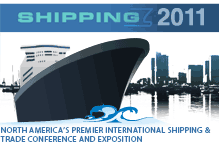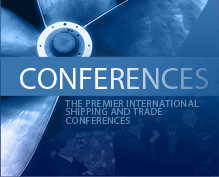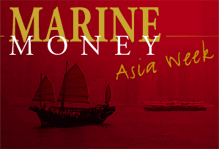
Bitter Pills to Swallow but Recovery Nearer in Sight
Over 12 months of negotiations and uncertainty, Rickmers Maritime has finally reached an agreement with its lending banks and sponsor, Rickmers Group. Who would have thought that the decision to acquire ships with long term charters from the major liners during the good days could exert such a severe impact on the trust’s performance? After all, during the boom investors focused largely on growth but this has led to the challenges that shipping trusts are facing today in the form of deflated asset values and lease rates. Rickmers Maritime has two pressing issues to resolve – a) a USD 130 million top-up facility that matured in April 2010 and b) an obligation to acquire 7 vessels from the sponsor with total contract value of USD 918.7 million.
In terms of loan restructurings, Rickmers Maritime’s lenders believed to be Citibank, DBS and HSH Nordbank have agreed to convert the balance amount of the USD 130 million facility into a five-year amortising loan and the value-to-loan covenants will be waived by all the lending banks for up to three years. In addition, the trust can take comfort that no market disruption clause will be invoked during the wavier period. But in exchange for the loan extension and temporary covenant waivers, the trust is required to prepay USD 59 million in FY 2010 and accept a revised interest rate of 1.75% per annum over three month LIBOR, which represents increases of between 55 bps and 105 bps on its existing borrowings. Unitholders will also have to live with the decision that the trust can only make quarterly distribution payments of up to 0.6 US cents per unit, provided no event of default has occurred under any facility. Continue Reading
Indonesian Banks Step Up?
Middle Eastern banks are not the only financial institutions supporting their domestic shipping clients. Indonesia’s Berlian Laju Tanker has reportedly secured several new domestic facilities, including a USD 33 million rupiah denominated facility obtained from Bank Negara Indonesia.
13,100 TEU Ships Financed!
Last week, United Arab Shipping Company (“UASC”) announced that it has inked a KWD 25 million (USD 86.6 million) senior unsecured term bilateral loan from Kuwait’s second largest bank, Gulf Bank. This is the one of a series of facilities sought by UASC that will be invested in its USD 1.5 billion container vessel newbuilding program. Earlier in February, the boxship owner and operator had similarly found success with Middle Eastern lenders in a multi-currency USD 275 million club deal. Appointed mandated lead arranger and coordinating bank Qatar National Bank roped in participants Burgan Bank, Commercial Bank of Qatar and Doha Bank while BNP Paribas was the structuring bank. This facility will be used to finance three out of the nine 13,100 TEU vessels ordered at Samsung Heavy Industries in June 2008.
USAC currently operates 42 container vessels and will expand its capacity to 300,000 TEUs when it takes delivery of the nine 13,100 TEU ships. Suffering from a combination of depressed demand and tonnage oversupply, mega ships are often seen to be inflexible and economically infeasible to operate during the bad times and it remains challenging to secure funds for these vessels. But with its cash rich backers from the governments of Bahrain, Iraq, Kuwait, Qatar, Saudi Arabia and the United Arab Emirates, UASC benefits from its pedigree background and the latest loans demonstrate the strong support regional banks are providing to their shipping clients. Continue Reading
Notes in Demand
Singapore listed marine services provider Ezra Holdings is raising new debt with the advice of DBS and HSBC. The three year USD 100 million unsecured guaranteed financing will comprise fixed rate notes and a transferable term loan facility. What is a transferable term loan? Simply put, it is a bank loan facility that can be traded between lenders. According to the Law of Multi-banking Financing: Syndications and Participations published by Agasha Mugasha, transferable term loan is a form of securitization that allows banks to trade loan assets, with the objective to improve the liquidity of the transferor banks and diversify lending risks.
No details on the actual split between the two arrangements have been announced but marketing for the notes has commenced on Tuesday, with the institutional investors largely in mind. Proceeds will be used to finance new business opportunities and capital expenditure, possibly to fund the acquisition of the Crusader 2, an ice class DP3 well-intervention vessel. Continue Reading
Labuan Woos Shipowners with Tax Savings But…
Malaysia has been pushing forward on plans to attract shipowners to Labuan but experts say many corporations and SMEs in the shipping business remain unaware of the significant tax benefits offered to encourage more shipping leasing activities in the island. Speaking at a seminar co-organised by OCBC Bank (Malaysia) Berhad and Equity Trust (Labuan) Limited recently, Ms Sue Yong, managing director of Equity Trust, said the favourable tax regime and regulatory environment in Labuan has helped both foreign and Malaysian-based companies to lower their operating costs through innovative leasing structures.
Ms Yong pointed out that leasing through the Labuan International Business & Financial Centre (“Labuan IBFC”) involves enormous tax benefits – taxation at 3% of net audited profit or a flat tax of RM20,000 (USD 6,226) instead of the usual 25%. In addition to the tax benefit, offshore companies registered in Labuan need not pay withholding tax or stamp duty on offshore transactions with the exception of companies that are engaging in the business of transporting passengers or cargoes by sea or the chartering of ships on a voyage or time charter basis. Continue Reading
And a Pleasant Surprise in Malaysia
While the Singapore Exchange suffers a major setback, Bursa Malaysia is all ready to welcome the listing of one of the country’s leading shipbuilders, Shin Yang Shipping. The Sarawak based shipbuilder and owner has plans to list in Malaysia by the third quarter of this year. It hopes to sell 178.38 million new shares with AmInvestment Bank as the appointed advisor. Proceeds from the IPO will be used to acquire three anchor handling tugs and four cargo ships while the remaining funds will be used to expand its shipyards.
In addition to boasting a strong fleet of 238 vessels that comprises mainly tugboats, barges and small oil tankers, Shin Yang is also a leading shipbuilder in Malaysia, and has constructed over 103 vessels over the past five years. It is currently constructing a ship repairing yard in the United Arab Emirates as parts of its plans to grow into a major regional shipping company in Asia.
An Unexpected Twist
In a bizarre turn of events, New Century Shipbuilding (“NCS”) has canned its listing plans in Singapore on eve of pricing, citing tough market conditions. The Business Times in Singapore reported today that there is more to the sudden IPO pull-out than meets the eye. The largest privately owned shipbuilder in China is now accused of misleading investors through material inaccuracies contained in its prospectus. Quoting unnamed sources, a complaint made to the Singapore Exchange pointed out that the shipbuilder had failed to disclose that two shipbuilding contracts for Sino Noble worth USD 180 million had been terminated late last year and were wrongly listed as part of its outstanding orderbook. NCS had also failed to mention the legal claim amounting to USD 60 million that Sino Noble is currently claiming against the shipbuilder.
The company could face criminal action from the Monetary Authority of Singapore if found guilty of making false and misleading statements. According to its prospectus, its orderbook has an aggregate value of USD 5.2 billion as at 31 March 2010 and included orders for 83 vessels with a combined tonnage of approximately 10.8 million dwt to be delivered between 2010 and 2012. We are absolutely baffled by NCS’ non-disclosure in consideration that the two disputed contracts with Sino Noble accounted for only 3.5% of its total orderbook. There appear to be hardly sufficient reasons to place the IPO in jeopardy by not being transparent in this regard. Continue Reading
Seoulful Solutions
Korea’s ship finance scene has witnessed a wave of important new developments of the past months. A recent visit to several key Korean financial institutions yielded some interesting insight into how the ship finance market in that country is rapidly evolving and where future opportunities may be under development.
Korea Development Bank (KDB) is rapidly preparing for its privatization in the next year. 110 experienced staff have been transferred from KDB into “grandparent” company Korea Finance Corporation (KoFC). These include Mr. DongHae Lee, who many may know from his previous role as Team Head of Shipping Finance at KDB where he played a key role in developing the Let’s Together Fund as well as in other transactions such as Marine Money 2009 Bank Debt Deal of the Year winners KOGAS I and KOGAS II. Mr. Lee has taken up as General Manager, Global Finance Department at KoFC. He is joined by Mr. Yongsung Yim, now International Finance Team Head, Global Finance Department at KoFC. Continue Reading
KAMCO Delivers Impressive Report Card
We are excited to hear from KAMCO Ship Investment Management Corporation (“KAMCO”) that it has signed term sheets for five more shipping funds with a reputable Korean shipping company and for the very first time, a European bank will be providing the senior loans for these newbuildings. KAMCO is expecting to finance 10 more ships and by the end of this year, it will have close to 40 shipping funds under its belt.
During the Asian Financial Crisis in the late 1990s, cash strapped Korean shipping companies sold 112 ships at distressed prices to foreign buyers and the government was determined not to allow history to repeat itself. A year ago, the Ministry of Land, Transport & Maritime Affairs announced that it would spend up to KRW 1 trillion to acquire ships (not more than 15 years old) from local shipping companies in an effort to enhance their liquidity position and more importantly prevent a loss of national wealth. Continue Reading
Marine Money Capital Market League Tables
Deutsche, Morgan Stanley, DnB NOR, JP Morgan, Pareto and Citi Top League tables from Busy start of the year
By almost every measure, the start of 2010 has been a good one for those working in the capital markets for shipping. Over $2 billion has been raised in the US public equities markets, while in excess of $2 billion has been raised in the Western public debt markets. What is more another $2 billion in shelf registrations have been filed, with many additional projects at various stages of development.
Part of the story for the first part of 2010 has to be shipping’s remarkable ability to have avoided the catastrophic meltdown so many predicted. But, perhaps, an even more dramatic story has been the sure arrival of the influence of the public shipping company, with its nearly instant access to capital with which to take advantage of opportunity.
Marine Money’s recent survey of the bank and investment banking communities (see the May issue of Marine Money published shortly for more details) showed that by a wide majority public companies currently do and would continue to enjoy greater access to funding, and therefore a competitive advantage.
Continue Reading







